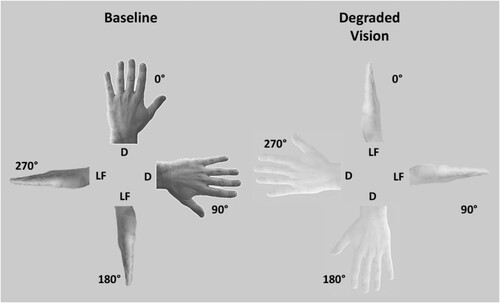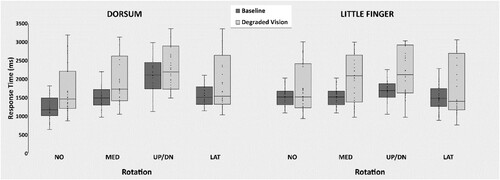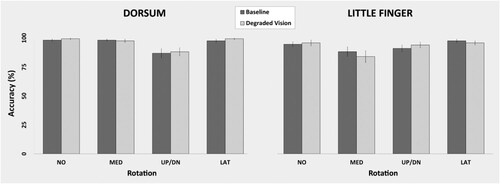Figures & data
Figure 1. Experimental stimuli. In the Baseline condition the hand images were presented with normal visibility with respect to the background (left panel). In the Degraded Vision condition, the visibility of the hand images with respect to the background was lowered by 60% (right panel). The background was the same in Degraded Vision and Baseline. Both Degraded and Baseline images varied in terms of Perspective (D = dorsum, LF = little finger) and were presented in one out of four orientations (0°, 90°, 180°, 270°). Beyond visibility, the overall configuration of Degraded and Baseline images was the same. Also hand laterality varied across images, but for illustrational purposes only left hands are represented in the figure.

Figure 2. Degraded Vision affects response time. Box and whiskers representations of the obtained data show that, with respect to Baseline, Degraded Vision slowed down mental rotation of both dorsum and little finger images, and additionally modified the shape of the response time profile for little finger images.

Figure 3. Vision-independent Accuracy. The lacking statistical significance of the 3-way interaction between Vision, Perspective, and Rotation, indicated the absence of a speed/accuracy trade off. Participants equally performed the mental rotation task in both vision conditions and types of hand images. Error bars represent standard errors.

